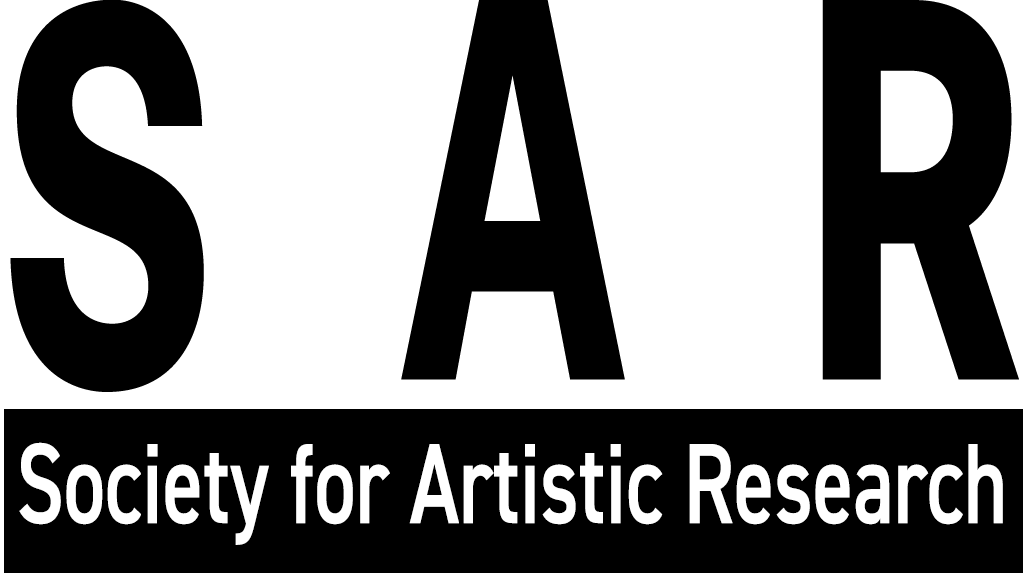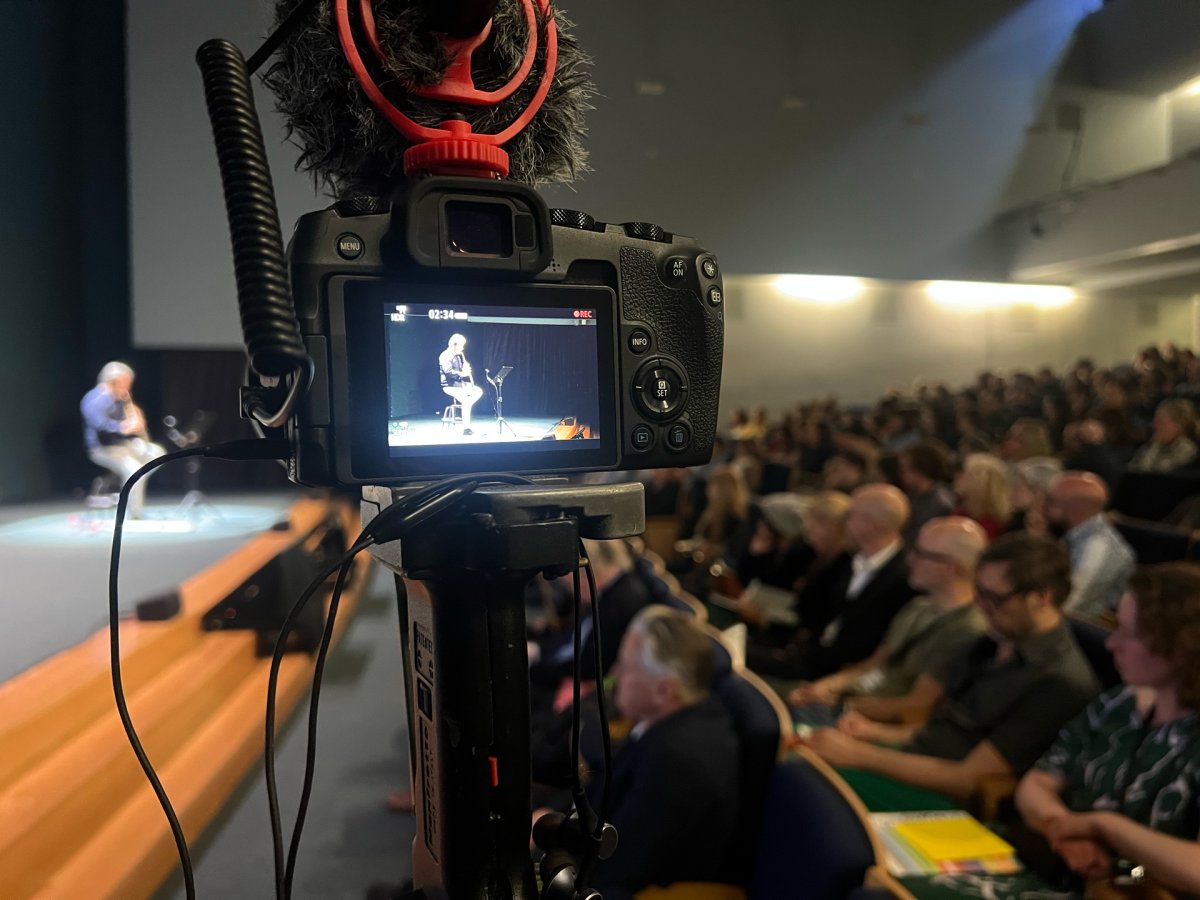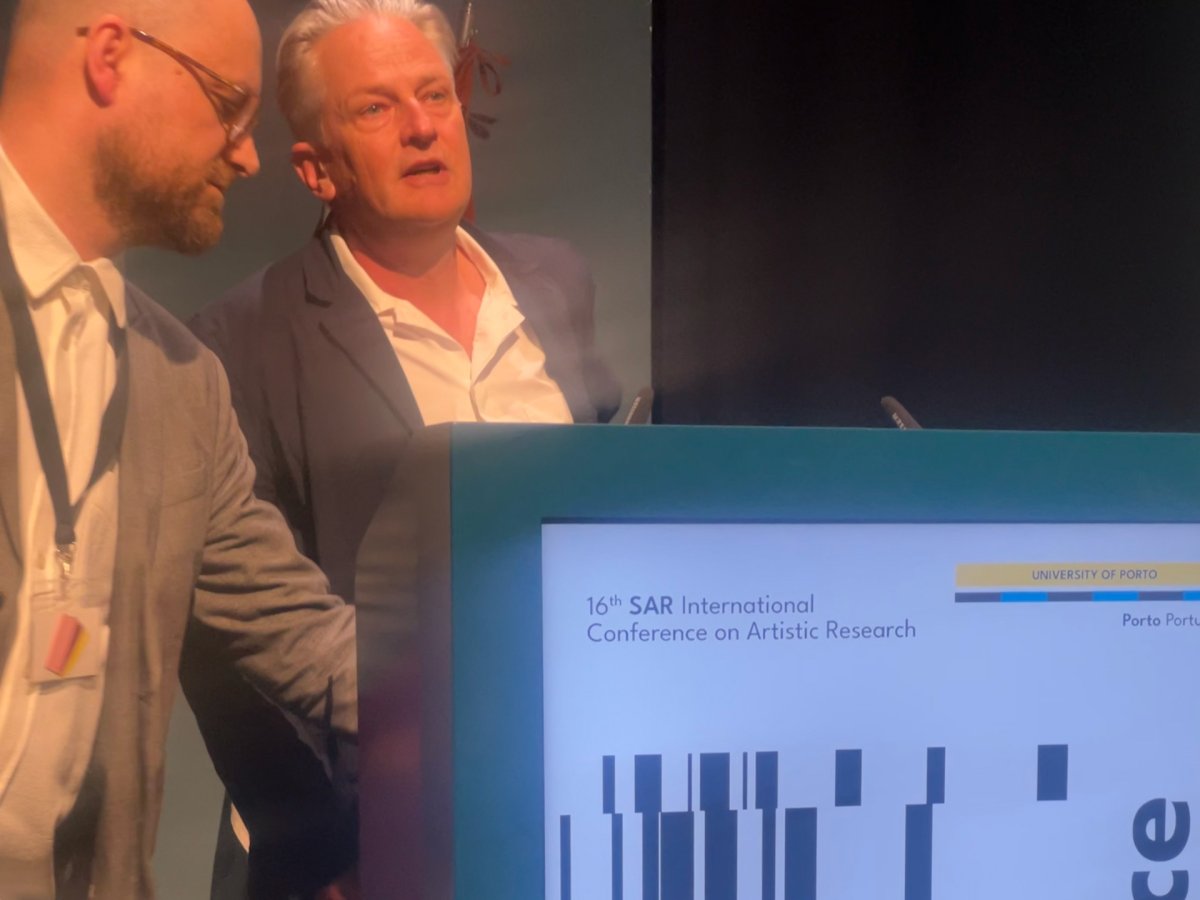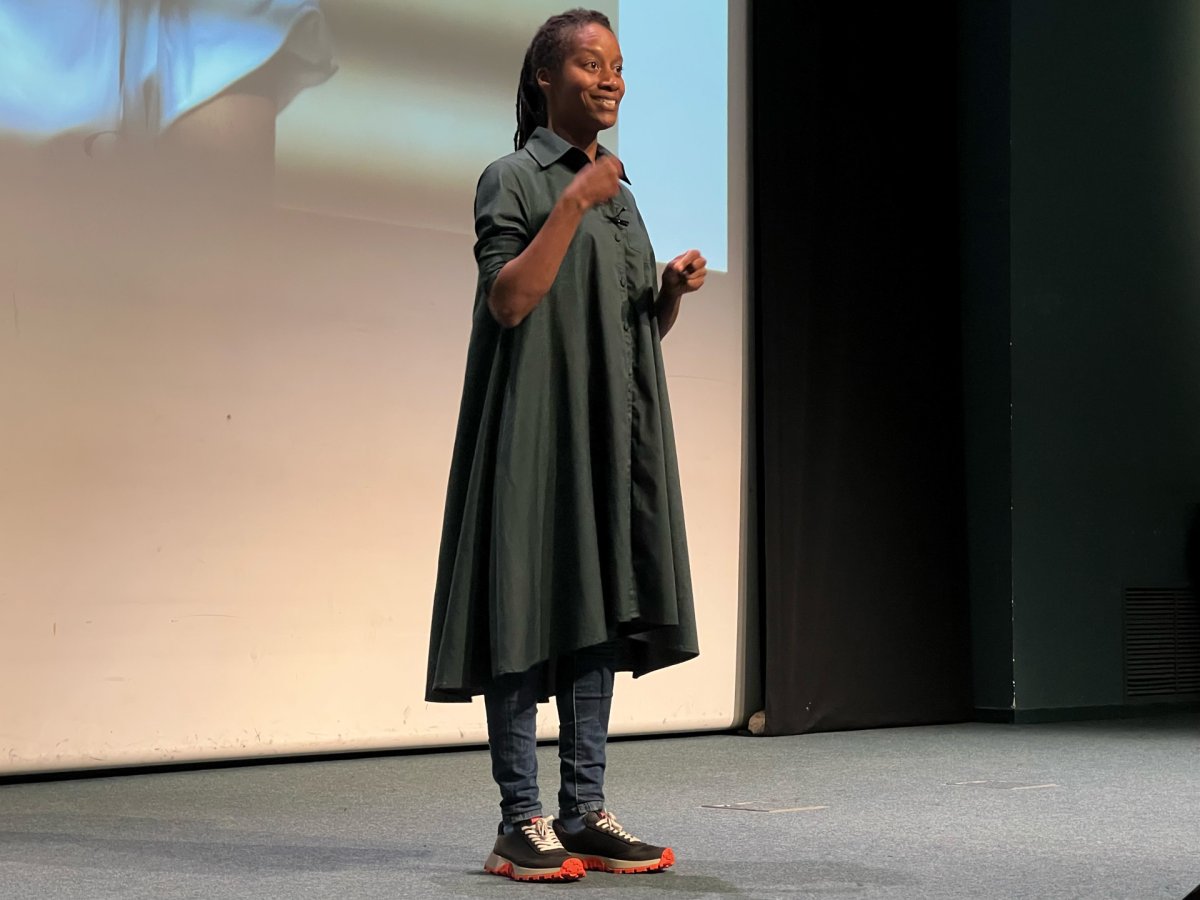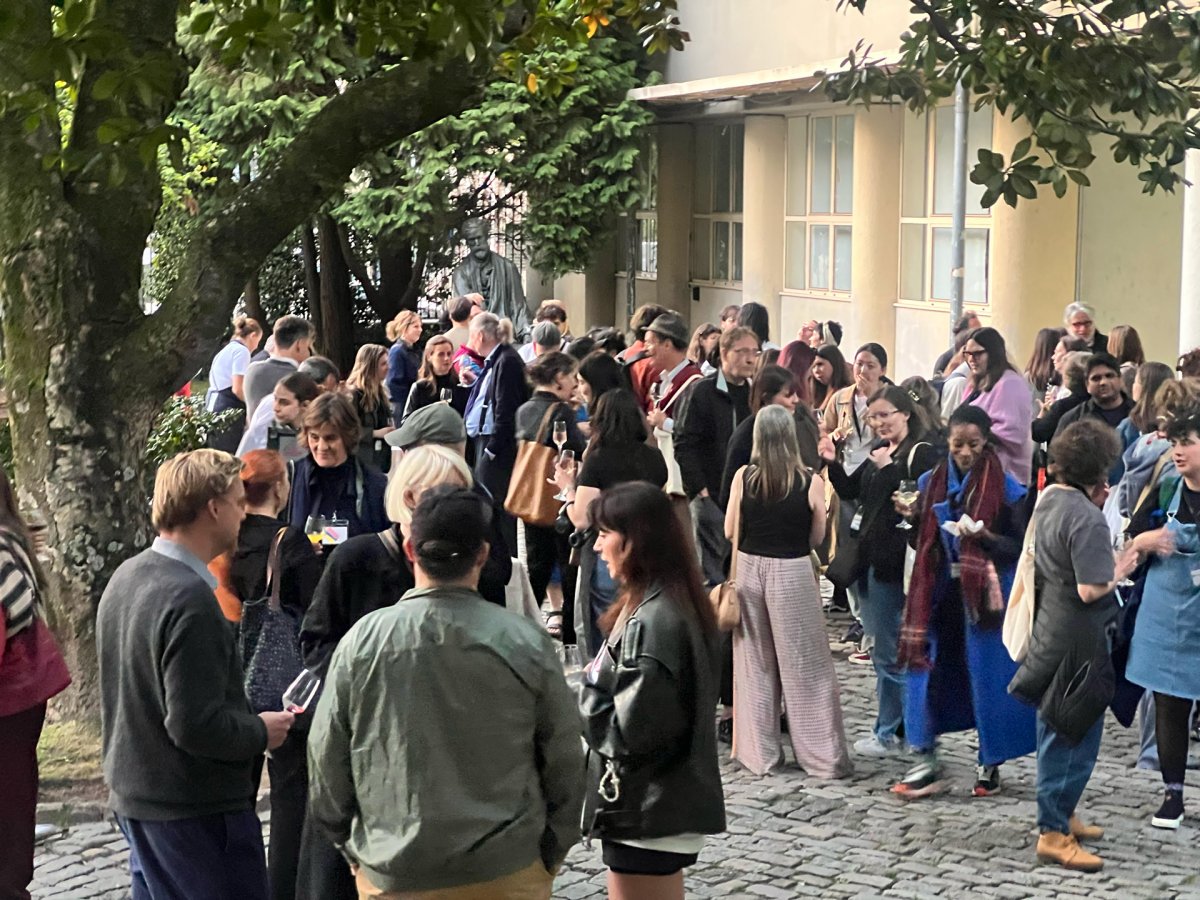Artistic research encompasses research-based art and arts-based research. It has experienced remarkable growth and dynamic development in recent decades. While retaining its intrinsic value, the vibrancy of artistic research increasingly aligns and resonates with the societal challenges of our time.
But wait, this is not about more artworks on climate change or yet another example of solar-powered tomato sauce. Today's challenges are more complicated and require advanced practices, as the stakes are high: In order to respond to the climate crisis and the ongoing digital transformations, the cultural and creative sectors and industries must adopt and embrace genuine forms of research and innovation - empowered by their own and unique ways of producing knowledge and insights.
Research through the arts rather than solely about them
Instead of merely engaging in deliberations about the arts and culture, their representation or management, it is imperative to recognize, enable, and facilitate research through the distinctive capacities of the creative disciplines. To produce valuable knowledge requires theory and practice-based strategies originating from the cultural and creative sectors rather than simply extracting and exploiting the outcomes of their activities.
Evidently, this aim cannot be achieved through generic R&D approaches borrowed from other industries. But it also fails when the capacities of art and culture are limited to merely providing certain aspects of creative processes as a service to actors and agents alien to the sectors or otherwise instrumentalising the work of artists and creators, and thereby disregarding their real creative potential.
The current situation is paradoxical
We are currently witnessing a surge in the importance and significance of artistic research, accompanied by heightened urgencies and vibrant energies. Although there are many indications suggesting that arts-based research and research-based arts are on a par with scientific research, the conditions for artistic research remain precarious and are often threatened by further deterioration. At this juncture, many artistic research institutions are facing financial cuts or even the complete loss of public funding, while at the same time being systematically attacked, ridiculed or delegitimised.
On the other hand, we must be aware that highlighting a relatively new, quite peculiar and rather minoritarian form of academic endeavour might even appear like an indulgence in a world that is falling apart while tendencies of self-isolation and bizarre attitudes of a past believed long forgotten further accelerate this fragmentation.
The disentanglement of knowledge and power
Precisely under these circumstances, the urgencies for artistic research become more pressing than ever. Significant shifts and transformations on large scales are typically anticipated through minute alterations and tiny changes on a very small scale. Often, they remain imperceptible amidst the pervasive noise of irrelevant opinions or targeted misinformation.
We need to recognise that the role of arts and culture is rapidly shifting from a desirable asset, nice to have as long as you can afford it, to a strategic necessity, in line with the dramatic changes in the political agenda. Arts and culture have become instruments of soft power in the current European defence discourse, aimed at preventing war while preparing for conflict. However, arts and culture are also emerging as a massive competitive advantage due to their dynamic potential and cultural diversity across Europe and globally.
Politicising aesthetics rather than aestheticising politics
These expectations might seem entirely new, yet many of the attitudes that underpin them resonate in different ways with Walter Benjamin's seminal formula from the 1930s: The current social transitions and rapid transformations demand of us a politicisation of aesthetics rather than an aesthetisation of politics. It is no longer a matter of enhancing the aesthetic appeal of design processes in order to make academic business as usual more attractive, sustainable or inclusive.
Such an instrumental approach to aestheticise what would otherwise be deemed unattractive or monotonous, merely reinforces stereotypes and clichés of beauty or style that typically operate through patterns of exploitation and extractivism.
However, the arts and culture in general, and artistic research in particular are confronted today with a vastly different and very big challenge we cannot and we should not underestimate:
Making sense of being in this world, a world that seems to disintegrate and fall apart. However, this does not call for concepts and approaches that are easy to digest, provide the comfort of an exclusive identity, or pretend to be homogenous, authentic and pure.
On the contrary, art and culture engage with the world in ways that acknowledge the complexity, multiplicity, and continuous transformation of life. This requires the audacity to deal with the fundamental conditions of impurity and complicity, to not lose hope and to keep the faith into this world, no matter in what a mess it appears. Making sense of being in this world means to develop investigative approaches that do not conceal the intrinsically political impact and the subversive value of aesthetics, diminishes or even denies it.
New forms of solidarity and investment
Rather than cutting funds and closing institutions, it is imperative to increase the accessibility of resources and opportunities for arts based research and research based arts. Not just in the long run, we must aim for models of a creative subsistence of artistic research that does not solely depend on public funding.
Under the given circumstances we are facing a tremendous urgency to develop and practice new forms of solidarity and investment within our artistic research community. This demands increased efforts
- to learn how to work together across institutional, geographic and disciplinary boundaries
- to build strong connections between artistic researchers inside and outside of academia
- to translate experience and expertise across generations
Shared creativity and collective intelligences
Most importantly, the resonances of the fragmentation of power in this world ultimately force us to upgrade the concept of creativity from a personal asset of a particularly gifted individual to a shared capacity involving an open and diverse multitude of actors and contributors who may play very different roles and produce unexpected results.
Moreover, dealing with these resonances will require all our collective intelligence to investigate new roles for art and culture, to map their various forms of impact, and to figure out how to make artistic research resilient, sustainable, and regenerative.
The Society for Artistic Research (SAR) is proud to contribute to these goals since more than 15 years in an entirely self-sustained, members driven way. It provides opportunities to meet and exchange in international conferences and meetings. It has built and will further develop the Research Catalogue (RC) as an open source, independent digital infrastructure to document and present the results of artistic research. And last but not least, SAR publishes the Journal for Artistic Research (JAR) as a renowned academic publication format that features and showcases the excellence of artistic research across the globe.
Special thanks to the organisers of the 16th SAR International Conference on Artistic Research from 7-9 May from the Faculdade de Belas Artes da Universidade do Porto, the keynote speakers Matthew Fuller, Yinka Esi Graves, Juliana Hodkinson, and last but not least: All contributors who presented their projects in conference and poster sessions as well as the more than 300 artistic researchers who participated in the event.
